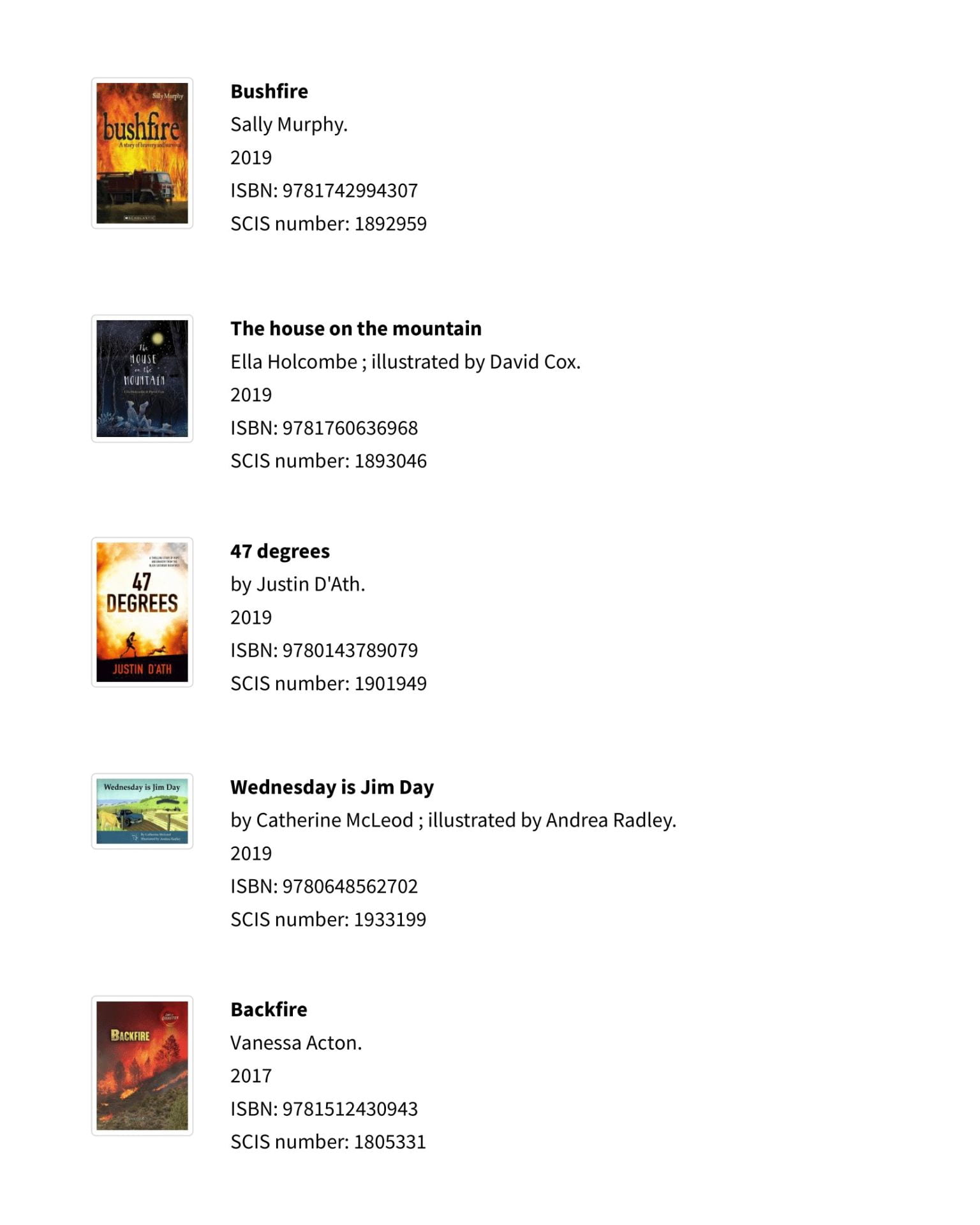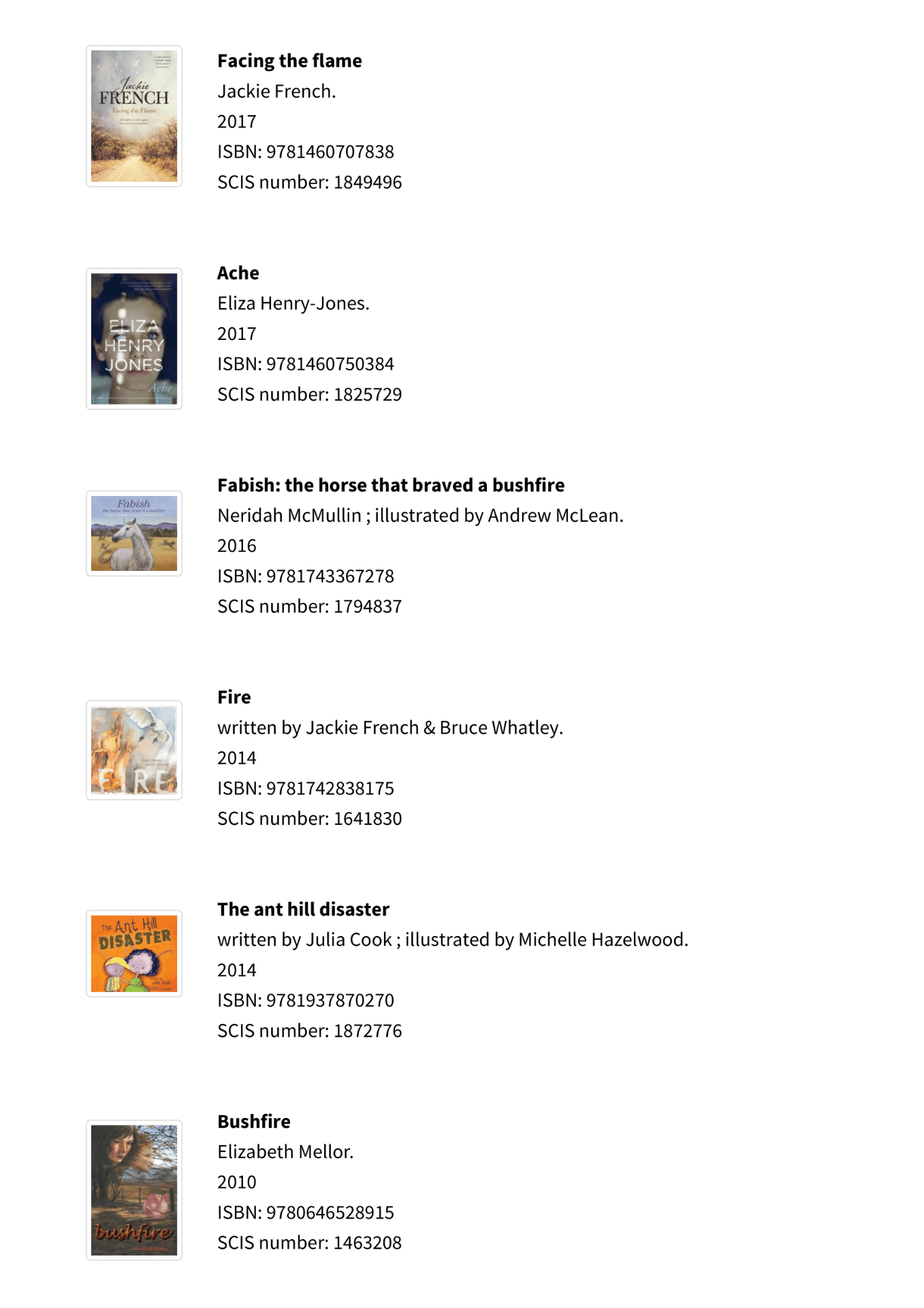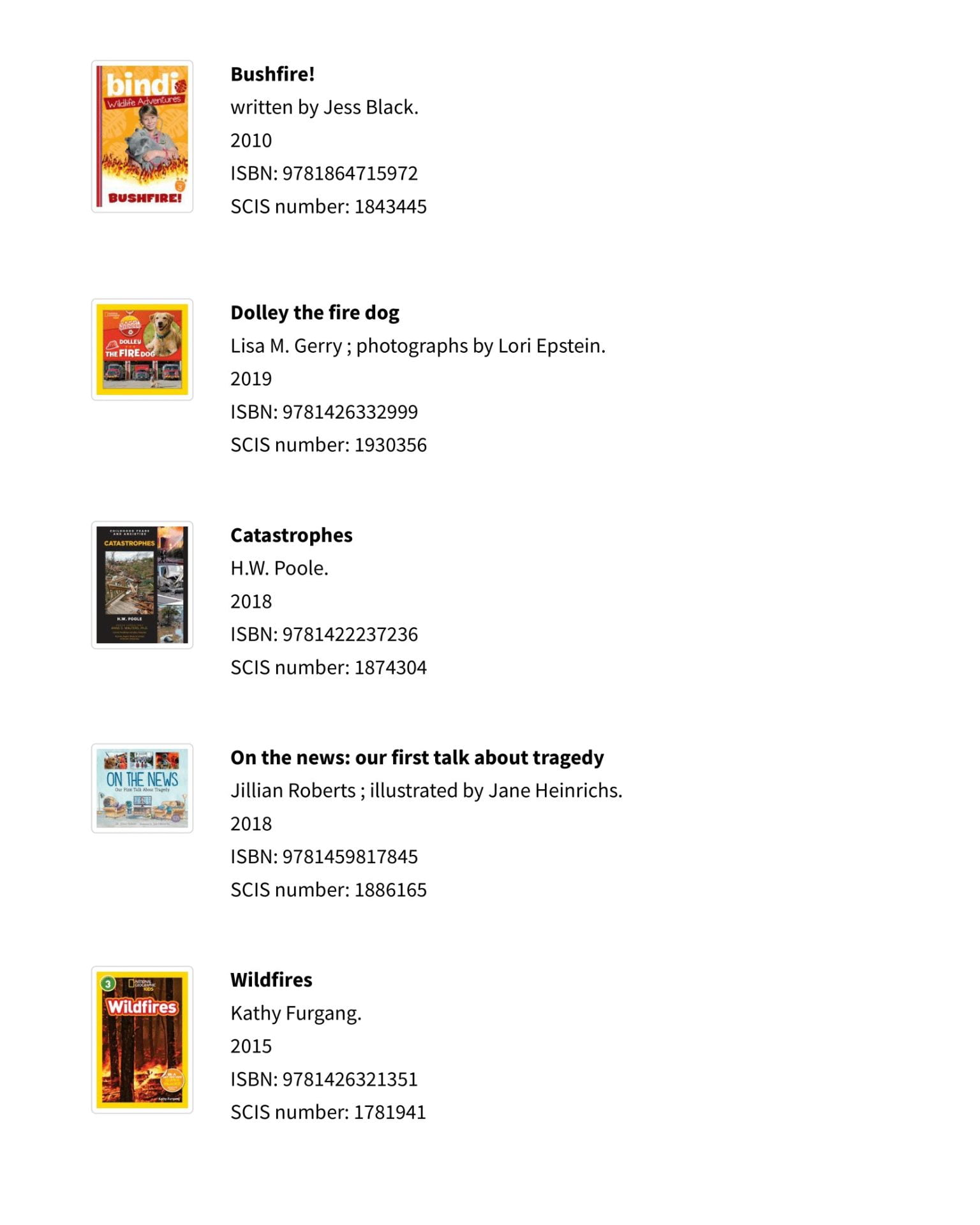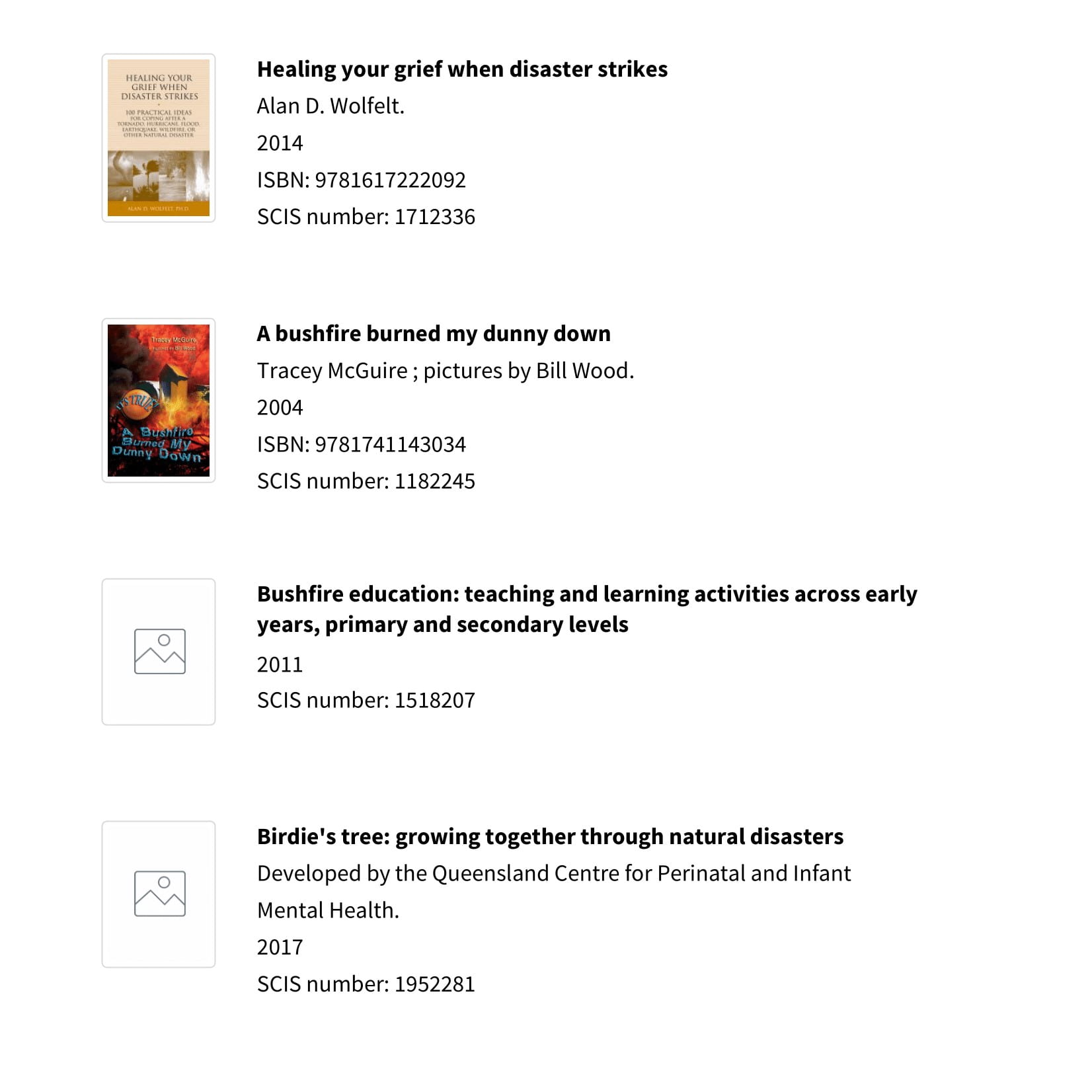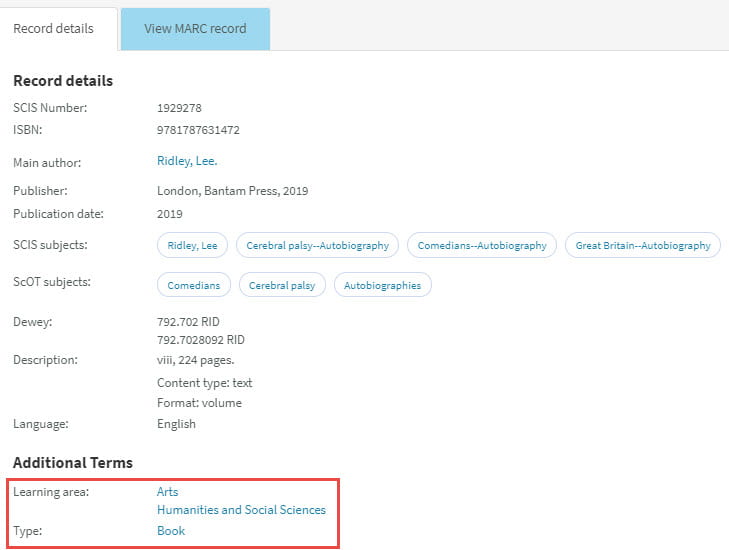
Welcome to lesson 2 of the SCIS short course! Let’s get started …
It is very important to document all of your procedures and policies. This will help you with consistency, and also ensure that your school community understands how the library works. One of the most important policy documents in the library is the collection policy.
In a nutshell, the collection policy outlines what your school will catalogue, while your library’s procedures detail the process on how you manage and catalogue your collection. Both documents are important for the effective running of a school library.
A collection is a term given to the resources that you make available for your community in your library. The collection may contain a variety of different formats, including print and non-print materials, and online resources.
Managing the collection to provide access for students and teachers is a very important part of your role. Key to this is understanding your school community and the curriculum that the library is supporting.
In lesson 1, we briefly touched on the collection policy, and why it is important. In this lesson, we’ll break down collection policies and go over acquisitions, weeding and stocktake, all key activities required in order to effectively manage your collection.
Collection policy
A collection policy is a document that sets out the framework and principles for the library’s selection of resources and how they will be managed. It outlines the policy for selecting materials to include in the collection, as well as the criteria for removing materials. The policy will be complemented by procedural documents that outline how to undertake certain processes.
What do you need to create a collection policy?
The collection policy is unique to your own school community. So the first thing to do is to gather information about your school and the collection that you already have. You may have already started thinking about this during lesson 1. You can find information about the school and curriculum from school policy documents, your school’s website and intranet, and from discussions with the teaching staff. Information about the existing collection can be obtained from the library management system. Depending on the system your school is using, you will be able to run reports to provide statistics about the number of loans, and the material already catalogued in the collection.
The sort of information you will need to gather includes:
- Your school community
- Type of school
- Year levels covered – primary, secondary or both
- Number of campuses (if applicable)
- The school’s vision and plans
- The curriculum
- What are the learning areas that you need to support?
- Are there any specialty areas?
- The existing collection
- Are there any gaps?
- What are its strengths?
- How well used is it?
- What parts of the collection are borrowed the most?
- What parts of the collection are borrowed the least?
- How many materials do you have?
- How old are the existing materials?
- The budget
- Who is responsible for the budget?
- How much is the school able to spend on resources?
- How is this divided across the different parts of the collection?
What should be included in a collection policy?
Think about the collection that your school needs. What are the vision and goals for the collection?
Once you know what you want to achieve, you can start to build a policy to help you.
The list below is a guide to the sorts of things that you might include in a collection policy:
- Vision and goals for the library
- Criteria for selecting resources, including material formats
- Procedures for withdrawing (weeding) materials from the library
- Policy for websites and online material
- Policy on donated materials
- Policy on lost items
- Procedure for dealing with complaints about materials in the collection
- Copyright
Acquisitions
Acquisitions is the process of ordering and receiving resources into your library collection.
Ordering
Your school may have a procedure and system in place for purchasing, or you may order directly through an ordering module in your library management system. It is important to check and understand what the school’s requirements are for purchasing. It is a good idea to keep a record of all orders in the library management system so that you can keep track of your purchasing.
Receiving
Receiving is the process of adding the resource into your collection, finalising the purchasing process once the order has been received, and processing the invoice.
Barcoding
When new materials are received in the library, they are tagged for circulation. Libraries may use barcode labels or RFID tags for this purpose. These tags identify each item individually so that you can track them.
Libraries use barcode scanners to circulate barcoded material and to scan ISBNs from book covers during the receiving process.
Weeding
Weeding is the process of deselecting or removing material from your collection. Your collection policy can include the criteria that you use for this.
Things to consider are:
- Is the material up to date? Is the information still current?
- Current editions: Is there a later edition of the work that updates it?
- Is the material being used? Circulation (loan/borrowing) reports from your library management system can tell you what items are not being borrowed
- Is the material still in a useable condition? Is it damaged, dirty or ugly?
- Is the material still relevant to your school and its curriculum?
- Disposal of weeded material. Do you run a second-hand bookstall, donate weeded resources to charity or place in a recycling bin?
Stocktaking
Stocktaking is a process that checks the materials in your collection, against your holding records, and it is a good way to identify lost materials. It also ensures an accurate record of existing resources for insurance purposes.
For many school libraries, stocktaking is an annual task. Other libraries identify a particular part of the collection to do each year, on a rotating basis. A date is set for the start of stocktake, and then all materials that are in the library are scanned. Once the scanning is complete, you can run reports from your library management system. From these reports, you can identify all materials that have not been scanned since the start date. This will show you what is missing.
Activity
If your library doesn’t already have a collection policy, now would be a great time to create one! You can begin by gathering information about your school community, the curriculum, your existing collection and budget, as indicated above. Templates and guides on writing policies are found in the resources listed below.
Already have a collection policy set up? Fantastic! We suggest you read through and ensure it is still relevant and meets the needs of your community.
Undertake collection analysis and evaluation using the SCHOOL LIBRARY COLLECTION RUBRIC in A manual for developing policies and procedures in Australian School Library Resource Centres.
Take some time to review your acquisitions, weeding, and stocktaking processes. What are your policies around donated materials and lost items?
Conclusion
In this lesson, we’ve covered the basics of a collection policy and explained its importance. We’ve offered some suggestions for what to include in your collection policy, along with an overview of acquisitions, weeding and stocktake. In lesson 3 we dive into the cataloguing process by looking at cataloguing standards.
Further reading
Collection policy
- Australian Library and Information Association (ALIA) and Australian School Library Association (ASLA), Rev. 2016, ALIA-ASLA policy on school library resource provision: Joint policy of the Australian Library and Information Association (ALIA) and Australian School Library Association (ASLA), https://www.alia.org.au/about-alia/policies-standards-and-guidelines/alia-asla-policy-school-library-resource-provision
- Australian Library and Information Association, 2017, A manual for developing policies and procedures in Australian School Library Resource Centres, 2nd edition, https://www.alia.org.au/sites/default/files/ALIA%20Schools%20policies%20and%20procedures%20manual_FINAL.pdf
- National Library of New Zealand, Services to schools: Collections and resources, https://natlib.govt.nz/schools/school-libraries/collections-and-resources/
Stocktaking
- National Library of New Zealand, Stocktaking guide, https://natlib.govt.nz/schools/school-libraries/library-systems-and-operations/library-operations/stocktaking-guide
- Managing a schools library(n.d.) Hobart: Libraries Tasmania. https://libraries.tas.gov.au/school-library/Pages/managing.aspx
- Collections and resources (n.d.) Hobart: Libraries Tasmania. https://libraries.tas.gov.au/school-library/Pages/school.aspx





